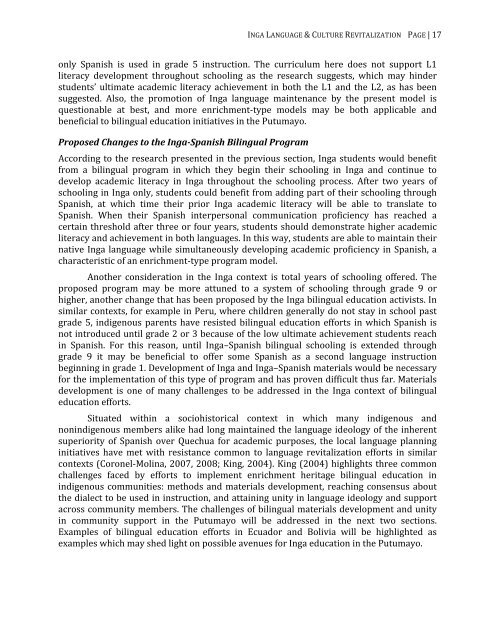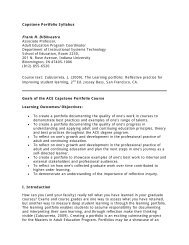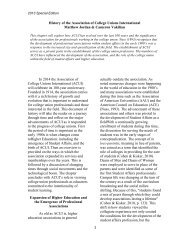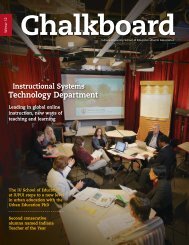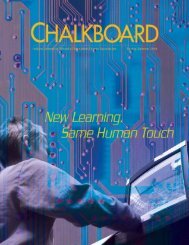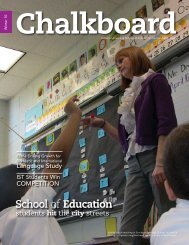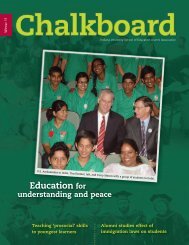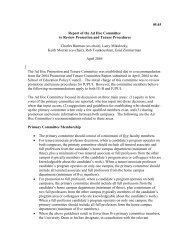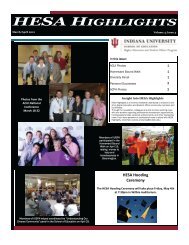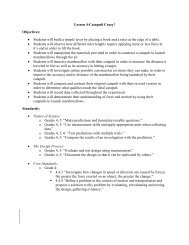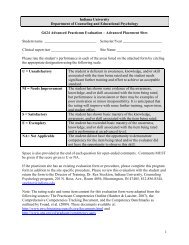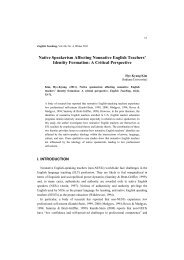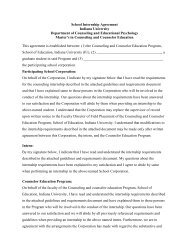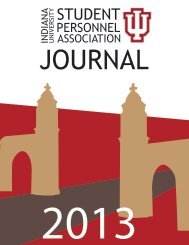Working Papers in Literacy, Culture, and Language Education
Working Papers in Literacy, Culture, and Language Education
Working Papers in Literacy, Culture, and Language Education
You also want an ePaper? Increase the reach of your titles
YUMPU automatically turns print PDFs into web optimized ePapers that Google loves.
INGA LANGUAGE & CULTURE REVITALIZATION PAGE | 17only Spanish is used <strong>in</strong> grade 5 <strong>in</strong>struction. The curriculum here does not support L1literacy development throughout school<strong>in</strong>g as the research suggests, which may h<strong>in</strong>derstudents’ ultimate academic literacy achievement <strong>in</strong> both the L1 <strong>and</strong> the L2, as has beensuggested. Also, the promotion of Inga language ma<strong>in</strong>tenance by the present model isquestionable at best, <strong>and</strong> more enrichment‐type models may be both applicable <strong>and</strong>beneficial to bil<strong>in</strong>gual education <strong>in</strong>itiatives <strong>in</strong> the Putumayo.Proposed Changes to the IngaSpanish Bil<strong>in</strong>gual ProgramAccord<strong>in</strong>g to the research presented <strong>in</strong> the previous section, Inga students would benefitfrom a bil<strong>in</strong>gual program <strong>in</strong> which they beg<strong>in</strong> their school<strong>in</strong>g <strong>in</strong> Inga <strong>and</strong> cont<strong>in</strong>ue todevelop academic literacy <strong>in</strong> Inga throughout the school<strong>in</strong>g process. After two years ofschool<strong>in</strong>g <strong>in</strong> Inga only, students could benefit from add<strong>in</strong>g part of their school<strong>in</strong>g throughSpanish, at which time their prior Inga academic literacy will be able to translate toSpanish. When their Spanish <strong>in</strong>terpersonal communication proficiency has reached acerta<strong>in</strong> threshold after three or four years, students should demonstrate higher academicliteracy <strong>and</strong> achievement <strong>in</strong> both languages. In this way, students are able to ma<strong>in</strong>ta<strong>in</strong> theirnative Inga language while simultaneously develop<strong>in</strong>g academic proficiency <strong>in</strong> Spanish, acharacteristic of an enrichment‐type program model.Another consideration <strong>in</strong> the Inga context is total years of school<strong>in</strong>g offered. Theproposed program may be more attuned to a system of school<strong>in</strong>g through grade 9 orhigher, another change that has been proposed by the Inga bil<strong>in</strong>gual education activists. Insimilar contexts, for example <strong>in</strong> Peru, where children generally do not stay <strong>in</strong> school pastgrade 5, <strong>in</strong>digenous parents have resisted bil<strong>in</strong>gual education efforts <strong>in</strong> which Spanish isnot <strong>in</strong>troduced until grade 2 or 3 because of the low ultimate achievement students reach<strong>in</strong> Spanish. For this reason, until Inga–Spanish bil<strong>in</strong>gual school<strong>in</strong>g is extended throughgrade 9 it may be beneficial to offer some Spanish as a second language <strong>in</strong>structionbeg<strong>in</strong>n<strong>in</strong>g <strong>in</strong> grade 1. Development of Inga <strong>and</strong> Inga–Spanish materials would be necessaryfor the implementation of this type of program <strong>and</strong> has proven difficult thus far. Materialsdevelopment is one of many challenges to be addressed <strong>in</strong> the Inga context of bil<strong>in</strong>gualeducation efforts.Situated with<strong>in</strong> a sociohistorical context <strong>in</strong> which many <strong>in</strong>digenous <strong>and</strong>non<strong>in</strong>digenous members alike had long ma<strong>in</strong>ta<strong>in</strong>ed the language ideology of the <strong>in</strong>herentsuperiority of Spanish over Quechua for academic purposes, the local language plann<strong>in</strong>g<strong>in</strong>itiatives have met with resistance common to language revitalization efforts <strong>in</strong> similarcontexts (Coronel‐Mol<strong>in</strong>a, 2007, 2008; K<strong>in</strong>g, 2004). K<strong>in</strong>g (2004) highlights three commonchallenges faced by efforts to implement enrichment heritage bil<strong>in</strong>gual education <strong>in</strong><strong>in</strong>digenous communities: methods <strong>and</strong> materials development, reach<strong>in</strong>g consensus aboutthe dialect to be used <strong>in</strong> <strong>in</strong>struction, <strong>and</strong> atta<strong>in</strong><strong>in</strong>g unity <strong>in</strong> language ideology <strong>and</strong> supportacross community members. The challenges of bil<strong>in</strong>gual materials development <strong>and</strong> unity<strong>in</strong> community support <strong>in</strong> the Putumayo will be addressed <strong>in</strong> the next two sections.Examples of bil<strong>in</strong>gual education efforts <strong>in</strong> Ecuador <strong>and</strong> Bolivia will be highlighted asexamples which may shed light on possible avenues for Inga education <strong>in</strong> the Putumayo.


